Write Us
We are just a call away
[ LET’S TALK AI ]
X
Discover AI-
Powered Solutions
Get ready to explore cutting-edge AI technologies that can transform your workflow!

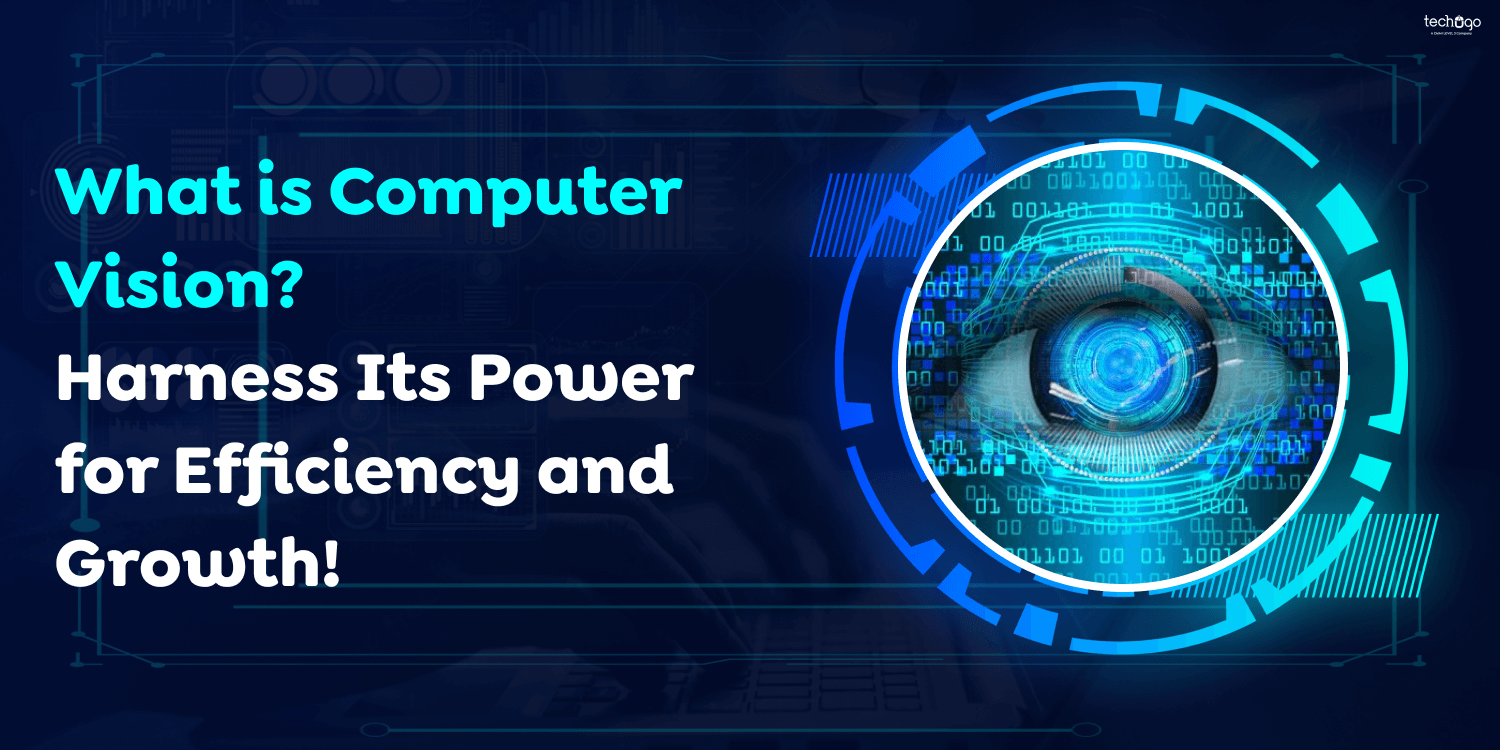
With the growing advancement of technology, companies seek to increase effectiveness and efficiency. One significant advancement in this direction is incorporating the latest technology, such as artificial intelligence (AI) and computer vision. This technology is rapidly changing how companies operate and is setting high standards of excellence.
Computer vision is one branch of AI. It assists computers in reading videos and images and collecting data for various purposes. Many factors contribute to using computer vision in business, including gaining a competitive advantage, streamlining operational processes, and improving the customer experience.
Computer vision is a part of AI and continues to grow as technology advances, as does machine learning. This is why businesses online have been adjusting slowly to the various applications of computer vision to improve their output and maintain their image.
In this blog, we will explore how you can use computer vision to improve your business workflow, the best ways to use it, and the benefits of computer vision for businesses.
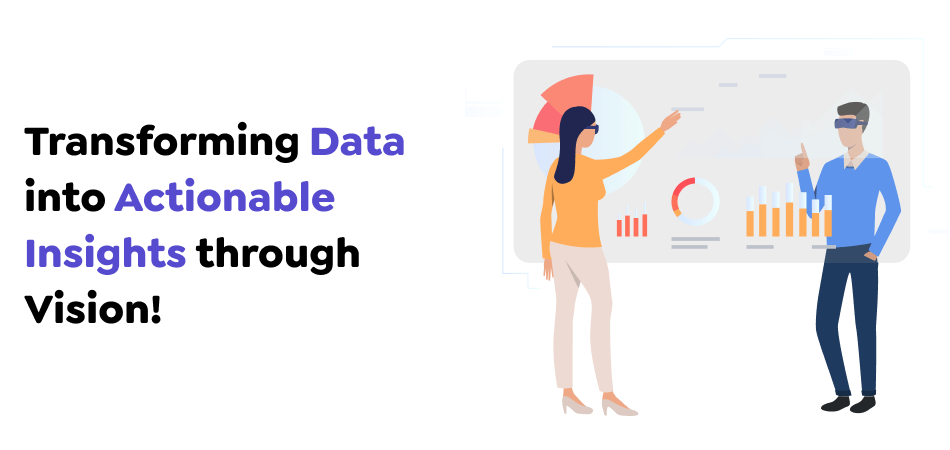
Computer vision, or CV, is an area of artificial intelligence that focuses on helping computers interpret, process, analyze, and comprehend visual information, such as videos and images. Computer vision aims to duplicate and improve humans’ ability to view and understand the world visually and equip machines to comprehend, reason, and take action in response to visual information.
It employs methods and algorithms derived from mathematics, computer science, statistics, and machine learning that extract relevant information from images and allow machines to detect objects, identify patterns, identify pictures, monitor motion, and perform different tasks that require the use of visuals. Computer vision can be used for various purposes, including video and image editing, robotics, medical imaging, autonomous vehicles, security and surveillance, and many more.
Computer vision aims to train computers to comprehend and interpret images by understanding each pixel. It’s the foundation of the field of computer vision. In the technical aspects, computer vision machines can extract visual information and then analyze and handle it to determine the results using sophisticated software. The computer vision industry generates up to 2.5 million bytes of data each day. The estimation is the principal factor behind the evolution and expansion of computer vision.
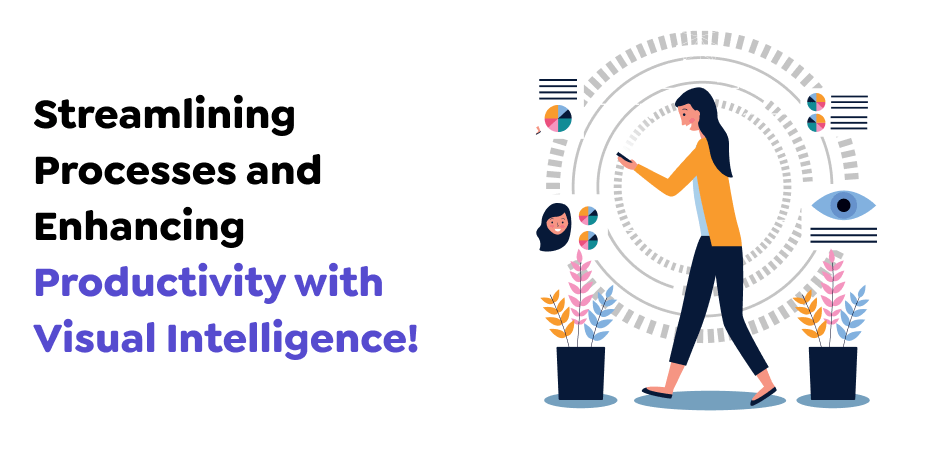
The background of computer vision technology was first discovered in the last quarter during the late 1960s. Through multiple iterations throughout the years, researchers slowly found that using computer vision to recognize faces. After the advent of massive datasets in the early 2000s, real time updates facial detection techniques significantly increased, altering the trajectory of history in computer vision. The world facial recognition market is projected to grow to $19.3 billion by 2032.
Technological Advances in IoT robotics change the way computers see. Computers’ capability to comprehend and see the world in the same way as humans is rapidly developing and expanding in hundreds of areas.
These data-driven examples show why businesses should be aware of computer vision’s benefits and how they can be integrated into workflow automation. Companies can leverage computer vision’s advantages in a variety of ways. From routine tasks like the recognition of images and documents to more operational tasks like pre-planned maintenance and forecasting inventory and management, the potential of computer vision is unlimited.
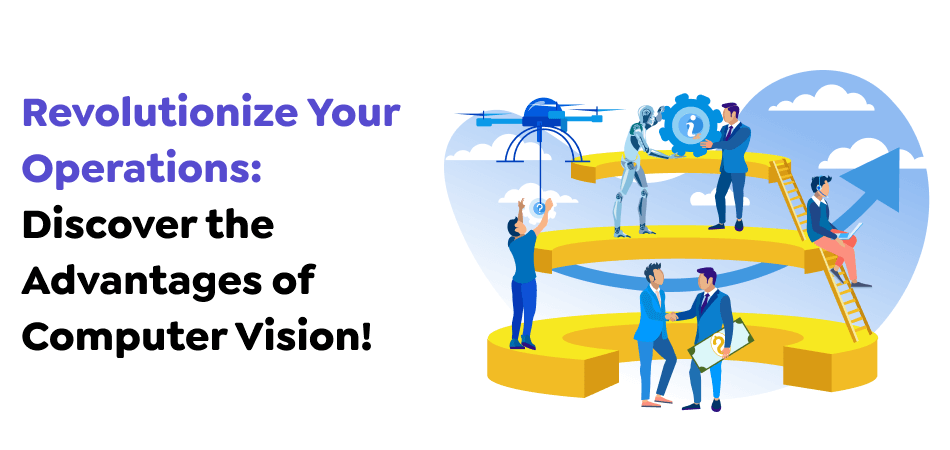
If you’ve gained an understanding of computer vision’s applications in companies, let’s discuss its advantages. This is a brief list of how computer vision can benefit your company.
One of the major benefits of computer vision for business intelligence is the improvement in data accuracy. Vast databases are analyzed using highly consistent and accurate computer vision software, eliminating the bias and errors caused by the human eye.
Computer vision as a tool for your business will help reduce costs. Using this trending technology increases your company’s effectiveness because it allows you to automate various processes using machine vision in AI. What does this mean? Effective, cost-effective operations without requiring hand-operated procedures over the long term.
Improved working efficiency is an essential benefit of computer vision for business intelligence. By outsourcing data and report analysis, companies can save money and time while enhancing the speed and quality of their decisions. This allows firms to improve their procedures, reduce costs, and increase revenues.
Computer vision may also assist in improving the customer experience by examining consumer behavior and taste. Businesses can gain valuable insight into consumers’ needs and preferences by studying visual details, including interactions with customers who purchase goods or services. This allows them to adjust their offerings to satisfy customers’ needs.
Computer vision may also enhance the detection of scams by examining visible data sources such as security videos and transaction data. By detecting trends and anomalies within this information, companies can spot fraudsters and stop fraudulent activity before it can cause major harm.
Computer vision could help improve the management of supply chains by monitoring stock levels and detecting product defects or production delays. By streamlining processes, businesses can significantly improve efficiency and reduce waste, ultimately boosting their bottom line.
Finally, by providing businesses with reliable, accurate data and facts, computer vision can assist them in making more intelligent decisions. By outsourcing analysis and data reporting, app development Companies can quickly and efficiently obtain the data required to make informed decisions, leading to better results and higher revenue.
Analyzing consumer behavior and preferences through computer vision could also help improve marketing strategies. Businesses can adjust their marketing tactics to reach their intended audience by analyzing visible data, such as how consumers interact with marketing and advertising, and learning about what is effective and what is not.
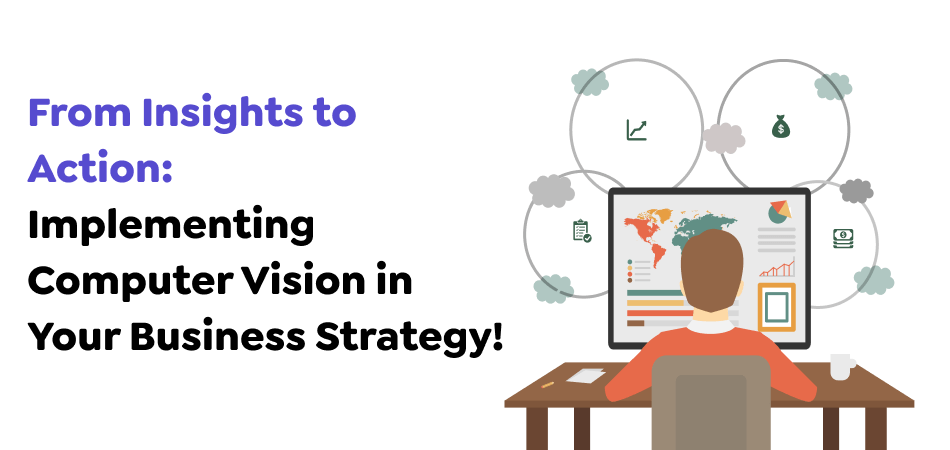
Computer vision is transforming various sectors, such as retail, manufacturing, and logistics to computer vision in healthcare. The business world always seeks methods to improve efficiency and provide top-quality services. If you’re a company proprietor, the primary objective is to earn more money that, naturally, is earned through your clients. You will draw many customers if you provide customers with the most seamless and easy-to-use services.
That’s another reason the technology is very popular with businesses around the globe. Look at computer vision applications in the commercial sector and the benefits they can bring to companies.
For monitoring customer foot traffic within retail establishments, computer vision algorithms process the real-time video stream in machine learning. Using techniques based on cameras, the video stream recorded by inexpensive security cameras can be used for surveillance. The algorithms can anonymously identify people to track their time across various locations, wait intervals, and waiting times. They also analyze the level of service and help improve customer service procedures.
Computer vision controls manufacturing equipment to check for wear and tear. To prevent malfunctions, computers continuously monitor for changes and produce detailed reports. This helps reduce downtime, helps manufacturers avoid expensive repairs, and permits them to schedule maintenance.
Cameras can be used by computer interaction machines that use vision to spot mistakes and changes in the machine’s data. If they spot a glitch and alert the system, human operators should correct the problem before equipment is damaged or an accident happens.
While we live in the age of digital solutions, we must consume a lot of printed documents. Reports, invoices, contracts, and certificates are all tangible documents piled on the shelves. They can take up most office space, which isn’t the only issue with these papers. Searching for specific elements in the document in its physical form can consume many hours and manual effort.
The rate then increased following the coronavirus outbreak, as most businesses were required to read the contracts to find the pertinent clauses to the greater forces. Computer vision analyzes the data in the documents through the use of natural language processing and optical character recognition technology.
This allows you to comprehend the information in the document and then transform it into digital format in just a few minutes. The users can then search within the documents to locate any clauses within documents through the input of text the document may contain.
Computer Vision will help banks to improve their customer experience in the branch. They can, for instance, detect customers when they enter the branch by comparing photographs taken by the camera at the entry point with images from the record. Using the knowledge gained by this research, banks can determine why customers are in the branch and provide a customized and relevant service while determining potential opportunities to up-sell and cross-sell.
Furthermore, analyzing customer opinions when interacting with Branch staff can offer useful information to improve customer service and experience. Computer vision combined with the study of video and photos can identify suspect activities, such as fraud, card skimming, and more.
Computer vision can enhance the processing of the Know Your Customer process, allowing banks to efficiently search and compare customer satisfaction images to find adverse medical reports and other harmful data posted on social media and the site.
Furthermore, KYC processes, such as mortgage onboarding and credit card registration, require manual efforts to record documents, analyze, and then extract the information, which can result in mistakes and have various effects on the procedure’s effectiveness. Computer vision simplifies document classification and extracts data to ensure a more efficient and faster KYC process.
The insurance claim filing process can take a long time and be delayed by human intervention. When a claim is submitted, an adjuster from the human side visits the workplace to examine the damage or the location where the incident was triggered. They will evaluate the damage, confirm the claim and coverage, evaluate the claim’s value, and approve the payment. Then, the Department of Finance will make the payment gateway process. Computer vision plays a vital part in assessing damage automatically, and identification eliminates roadblocks to claims processing speedily.
Insurance companies can offer distinct premiums for their clients based on the factors that they consider. In the case of a claim based on an image of the damaged car, the insurance company can employ computer vision to determine more precise details from the picture and calculate the amount of the loss using machine learning algorithms.
Commercial banks utilize OCR software to automate the classification of documents and extraction of data from scans. Current OCR software works on templates and rules with an extensive training program since each variant has to be taught and re-configured entirely from the ground up. The tiniest deviations in the template may cause errors and affect the data’s accuracy during extraction.
Many large multinational banks could attain less than 70% precise data using OCR over time due to the variety of documents they get from these entities. Computer vision OCR tools can detect unstructured files across templates and can automate the classification of the data extraction processes, which can increase accuracy.
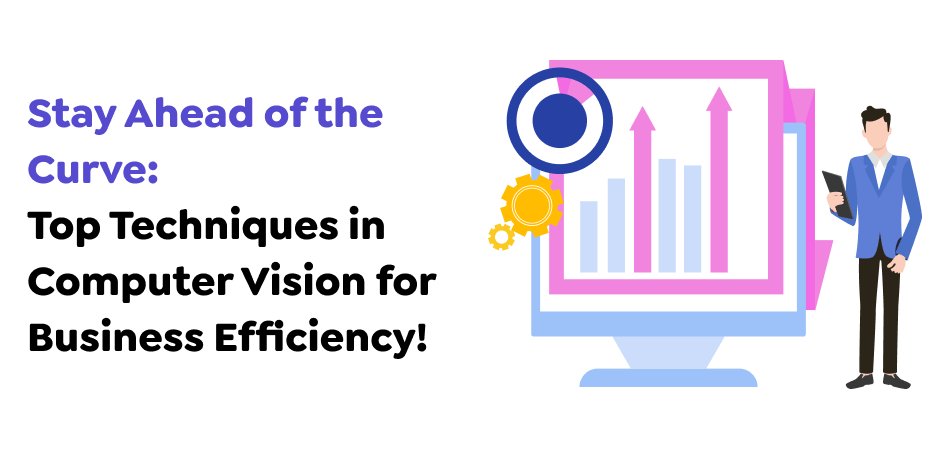
New advances in neural networks are deep learning projects that have significantly improved how these vision recognition systems function. Mastering the basic concepts in computer vision properly is not difficult, regardless of the field a company is in, which can be challenging.
When this happens, computer vision consultants’ services are the ideal choice for implementing this kind of modern technology. Some of the most significant features of the technology companies employ to make their decisions are listed below:
Incredibly, computers can recognize, analyze, and behave like human beings. To make that happen visually, images that an input device records must be classified in a specific category to take action. Many issues arise from classifying images within computer vision, such as perspective variations, scale variations, inter-class variations, image deformation images, light conditions, and background noise.
To tackle these problems, computer vision experts have developed a data-based method to overcome them. Instead of attempting to define the specific image class through code, they present the computer with images of each class. The algorithms for learning are developed for computers to understand the appearance and visual characteristics of every class so that they can categorize easily.
The process of defining objects inside images requires placing the bounding boxes as well as labels for the individual objects. This differs from the classification and recognition of pictures because recognition would place objects into an appropriate box once images have been classified. For instance, if many automobiles are in an image, every car must be identified and placed in a bound area. There are only two methods to classify them: bounding and non-object bounding.
Object detection is essential since it helps the system understand the picture or video and prepare it for analysis. The main difference is the capability to identify things within images or any other visual input. This is utilized in various ways for retail shops that employ expert computer vision solutions to manage crowds, autonomous automobiles, anomaly detection, facial detection, and video surveillance.
An additional level above semantic segmentation, instance segmentation separates different kinds of a single object into distinct classes. For example, if you have five vehicles of various colors, the Instance segmentation labels them accordingly. However simple it may seem, segmentation is not an easy process, specifically in the case of Instance segmentation, because it has to understand the distinction between images with many overlapping objects and various backgrounds.
CNN, known as Convolutional Neural Networks, is efficiently utilized in numerous methods. One example is finding the precise pixels for each object rather than simply locating the borders of each object. A good example of instance segmentation employed is Facebook AI. In Facebook AI, the application or the desktop version of the product can distinguish between two different colors of identical objects.
The process of tracking objects involves estimating their condition using the data gathered. This process is performed on two levels. The first is called Single Object Tracking, in which the visual appearance of the target is monitored. Then, MOT, or Multiple Object Tracking, is where the detection process is required to find targets that can leave or enter the scene.
The biggest challenge when finding multiple targets comes from interactions among things that may look similar. Recent years have seen a dramatic increase in accuracy due to the rapid growth in deep learning techniques. This has led to dramatic improvements in the precision and efficiency of detection and tracking techniques.
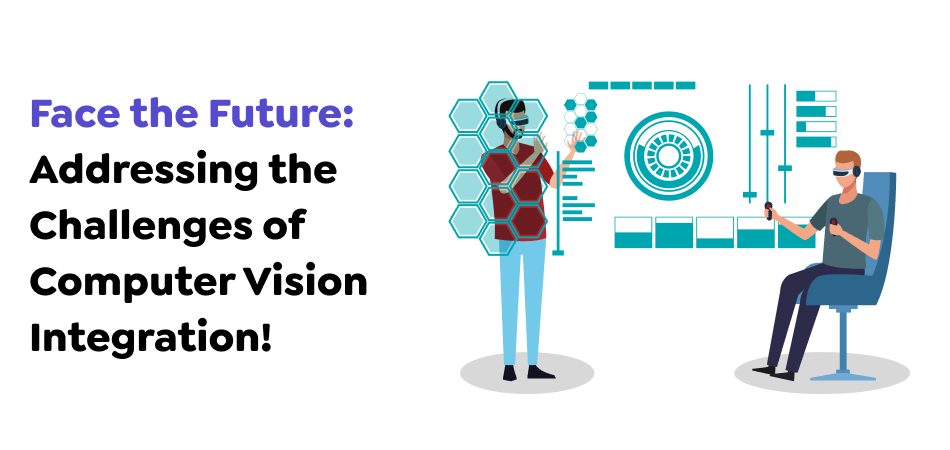
Although computer vision has countless advantages, including its ability to apply across multiple sectors, the technology also faces many issues. Check out some challenges of computer vision for companies.
For the training of any computer vision machine, thousands of images must be taken. Thanks to the rise of smartphones, the amount of pictures produced and distributed on the Internet increases daily. The two platforms are not all that different. Images are uploaded by the millions each day to the internet and are an incredible treasure chest for building algorithms for computers with vision systems.
Integrating computer vision elements into current processes can be challenging and requires proper planning. Finding solutions to technological advances and problems and ensuring efficient integration are crucial aspects of an efficient computer vision system.
When considering implementing computer vision in your businesses, consider the ethical aspects. It is crucial to monitor the ethical issues associated with computer vision, particularly when it comes to surveillance or facial recognition.
Processing millions of images by using neural networks demands an enormous amount of processing power. The older computers could not handle this, and thus, computer vision could not progress. The use of GPUs (Graphical Processing Units) has enabled computer systems with the capability to run neural networks and deep-learning algorithms at a faster rate. The introduction of cloud computing has further increased the speed of cloud computing use because storage space is more affordable and pay-as-you go.
In the past, computer vision was possible thanks to the large amount of video and images that were accessible. However, there is a negative benefit as well. The information that can be used to identify individuals is stored in cloud storage and can be used by private and government institutions through invasive techniques. This is a significant security risk that needs to be discussed openly to guarantee people’s security and privacy.
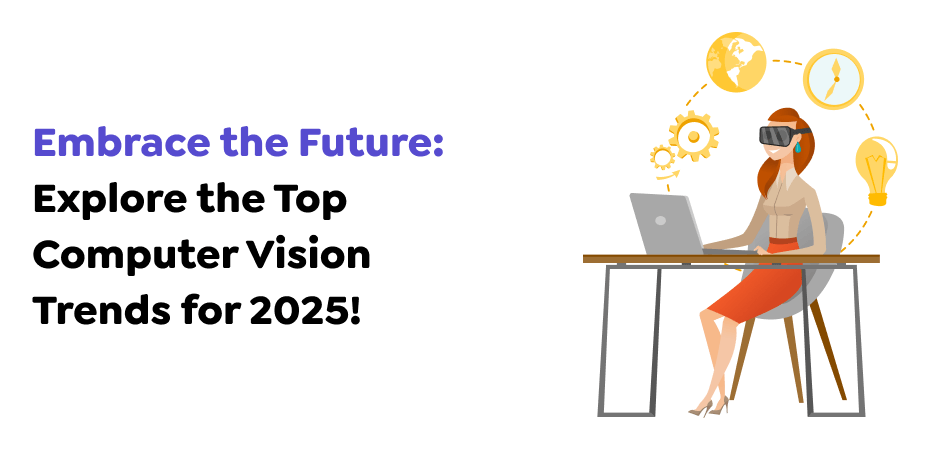
While computer vision-based applications within businesses are revolutionizing our world today, technology is at the beginning of its advancement. There’s plenty of exciting research to come in the field of computer vision and mobile app development company in USA may bring about revolutionary advancements. This is likely to be the result of the ongoing developments of machine learning, artificial intelligence, and the increasing use of computer vision across many sectors.
Merged Reality is a bridge between our virtual and physical worlds. Merged Reality (MR) integrates with AR and VR to create an immersive experience. Think of it as AR overlays digital elements on your actual view. VR on the other hand creates a wholly computer-generated environment, separating your body from its real-world world. The concept of merged reality blends the two and allows digital objects to interact and integrate into your environment.
In computer vision AI tools, Edge computing boosts processes in real-time. In terms of data security, edge computing is helpful because it doesn’t need a data center. Because of its unique architecture and security, it’s safer and more difficult for cybercriminals to exploit. The ability to process information at a near-real-time pace is advantageous in using computer vision—this ranges from intelligent security systems to driverless cars.
3D modeling is now the norm in computer vision, allowing computers to comprehend and interact with 3D objects more realistically. Computer vision systems with 3D models can examine and manipulate objects from various perspectives, such as how we see objects daily. This allows for more precise recognition of objects, tracking, and interaction.
It benefits fields such as virtual reality, augmented reality technology, robotics, and gaming. A realistic visualization of 3D objects is crucial to providing immersive experiences for users and accurate making of decisions. Since computer vision is continuing to improve, 3D modeling is increasingly important in expanding the capabilities of computers to see and communicate with the environment surrounding them.
Another computer vision application in the industry is self-driving automobiles. These vehicles can detect objects, identify streets, and make decisions immediately to ensure secure transportation. This is due to sophisticated vision systems that include cameras and sensors. However, as they increase in popularity, it will not be too long before the computers within these vehicles broadly use visual signals like human drivers.
Computer vision is not only concerned with being able to see the world around you; it’s also about generating it. Generative AI is a creative part of the machine brain that uses its vision knowledge to make artistically designed visuals. Instruments such as DALL-E 2, where simple texts can produce HD-quality images.
This can be used for various purposes, such as creating custom product mockups that are personalized or even realistic movie sets. The possibilities are limitless. With the advancement of generative AI and becoming more advanced, we will see ever-complex creations, blurring boundaries between machine and human art.
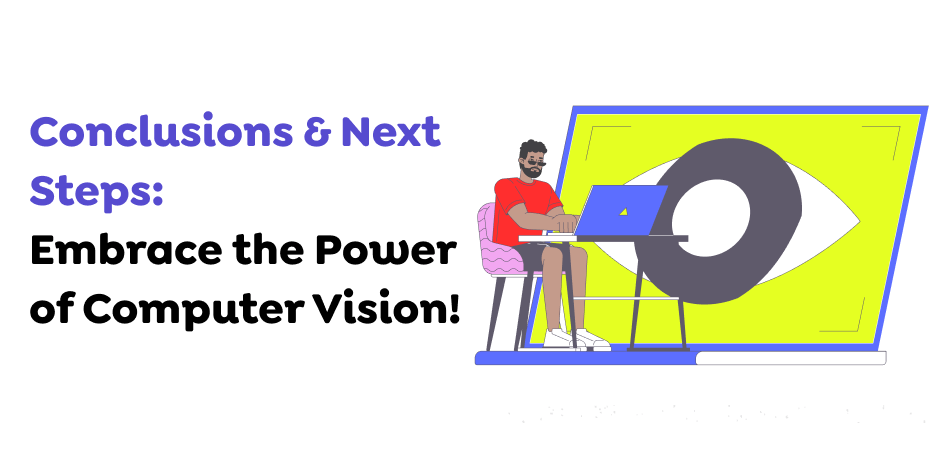
Computer vision is changing how automation will be done, giving unprecedented advantages to quality, flexibility, and scalability. In overcoming traditional approaches to automation and taking on advanced visual recognition technology, businesses can create more stable and agile automation solutions. While organizations continue to implement AI computer vision in their work and processes, they can unlock higher levels of efficiency and operational excellence.
Anyone using computer vision must comprehend this and implement security strategies right after the first deployment. It is also essential to maintain oversight and compliance with regulations for data to be sure it is being utilized ethically.
Companies that require solutions for computer vision can develop custom solutions designed with total privacy and security built-in.
Ready to elevate your business with computer vision? Get in touch with Techugo today to explore tailored solutions that drive efficiency and growth!
Write Us
sales@techugo.comOr fill this form